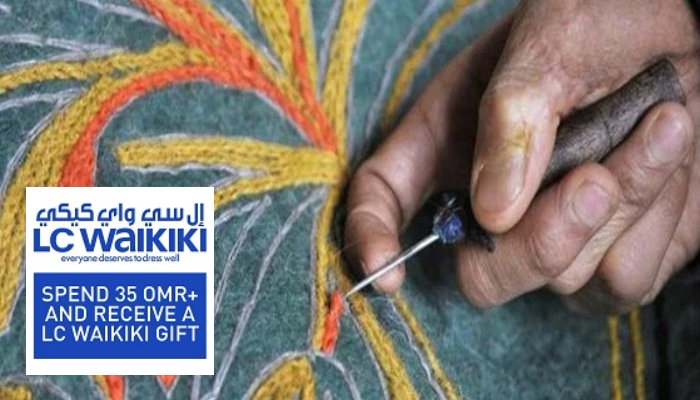
Srinagar : A centuries-old traditional craft that has been passed down from generation to generation in the valley is the art of making Namda.
Namda is a type of rug that is made of felted wool, which is finely worked. However, despite its significance, the traditional handicraft of Namda making is now threatened with extinction due to various reasons. The art of making Namda goes through several stages and requires skilled craftsmanship that has been handed down through generations. The process of making Namda involves various steps such as carding, creating the border, the creation of a layer, sprinkling soap solution, rolling the Namda, drying and finally, the Aari work.
To begin, the wool is carded to remove any impurities and make it finer. In creating the border, the weaver decides on the pattern of the border and attaches it to the wool. Once the border is completed, the main layer is started. Here the weaver decides on the color and the pattern of the Namda, intertwining it carefully with the wool. The next step is sprinkling soap solution on the Namda to create the felting process. This is where the magic happens in the Namda-making process. The wool starts to bind with the other wool fibers, which makes the Namda more durable and long-lasting.
The Namda is finally rolled and left for drying, then the Aari work is done, which is the intricate embroidery done on the Namda. It is this stage that adds an incredibly delicate form to Namda, transforming it into a work of art.
Despite the exquisite beauty of Namda, the tradition is threatened as there are fewer skilled craftsmen who have experience in this art form. Additionally, the modernization of carpets and the emergence of cheap imitations also contributed to its decline. Younger generations seem less interested in learning this ancient craft as a result of modern trends.
It is imperative that we educate young people on this tradition and make them aware of the significance of preserving this craft. It is equally important to promote the demand for authentic Namda carpets, which are a part of Kashmir's cultural heritage.
The loss of Namda would constitute a severe blow to the cultural heritage of Kashmir. If this handicraft is allowed to die out, we will lose an intricate piece of art, a part of our history, and a valuable addition to our economy. We must do everything possible to preserve and promote the traditional craft of Namda.
Only by supporting artisans and creating opportunities for the younger generation to learn and take this art form forward can we ensure that it will continue to be an essential part of the rich cultural heritage of the Kashmir Valley for generations to come.